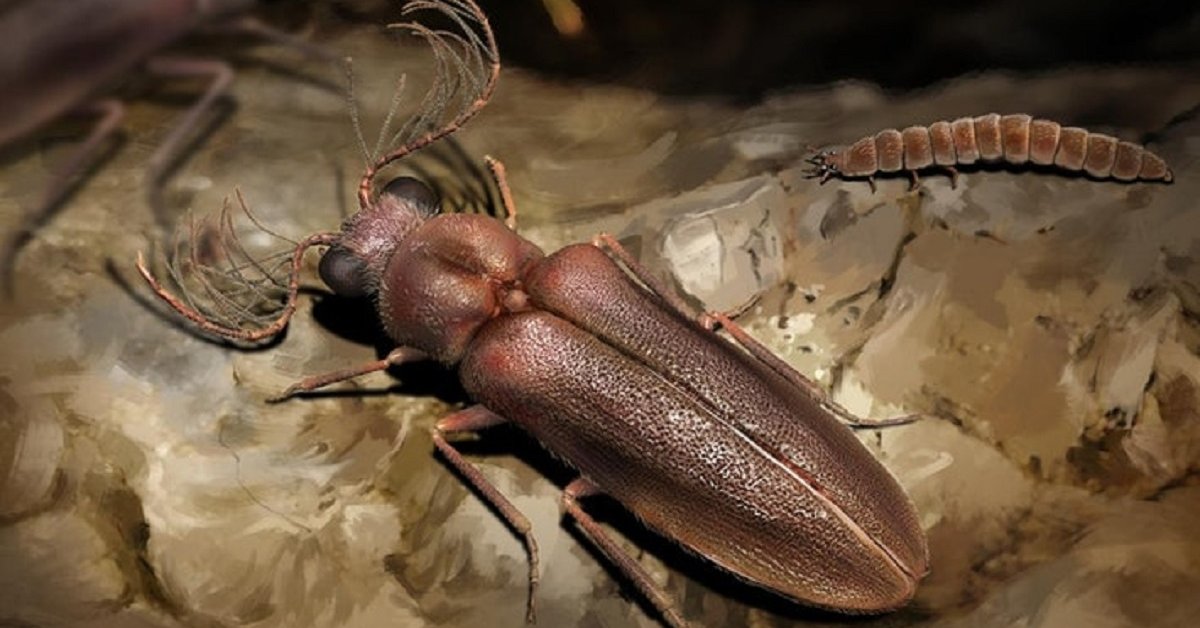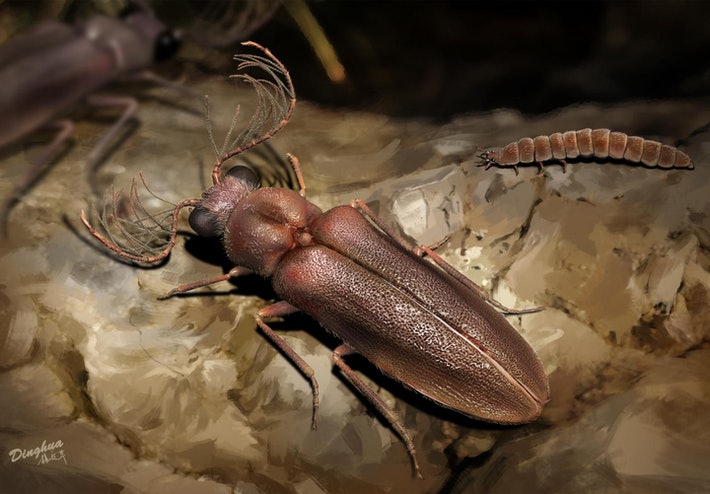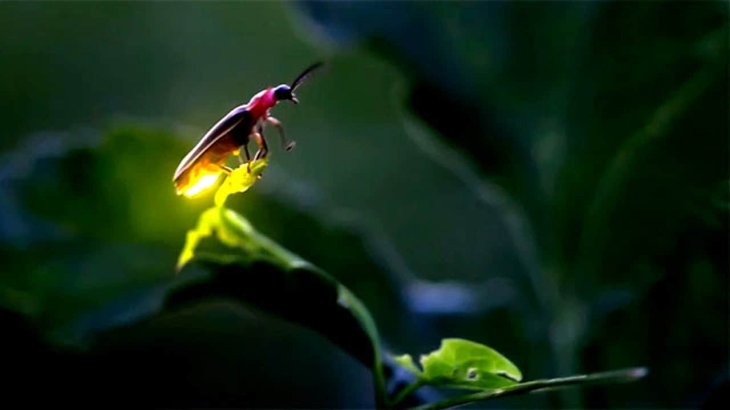This 99-Million-Year-Old Fossil Unlocks A Entirely New World To Study
Dhir Acharya - Feb 12, 2021

Recently, a scientist found an ancient insect preserved in amber. Little did we know, this discovery changed the scientific world forever.
- Japan Hydrogen Breakthrough: Scientists Crack the Clean Energy Code with Mind-Blowing 1,000% Efficiency Jump
- 'Five-second rule' For Food Dropped On The Floor: Is It True?
- Scientists Want To Send 6.7 Million Samples, Including Sperm, To The Moon
Recently, a scientist found an ancient insect preserved in amber. Little did we know, this discovery changed the scientific world forever.
Specifically, the newly found insect is the beetle Cretophengodes Azari, which was preserved well in Myanmar in 99-million-year-old amber. According to the research, the beetle belongs to a newly found insect family from the mid-Cretaceous period.

More importantly, the beetle is changing our understanding of the initial purpose of bioluminescence. Through analysis, it’s suggested that the light production of this insect evolved as a defense mechanism, similar to modern-day fireflies that use light to defend against predators. Bioluminescence is now used for varying purposes such as attracting mates and mimicry, but it most likely kept creatures alive in its earliest forms.
In the new discovery, the researchers found an ancient bioluminescent make beetle specimen that was preserved in amber in Myanmar. From here, they found a completely new beetle family existing in the Cretaceous era called the Cretophengodidae. This beetle also got a new species of its own, named Cretophengodes Azari. The beetle had bioluminescent features thanks to its light-producing organ on its abdomen.

Bioluminescent beetles such as the Cretophengodes Azari are classified as the Elateroidea superfamily, including existing insects like fire beetles, fireflies, as well as glow-worms. There are over 2,000 bioluminescent beetles, much more than any other light-producing terrestrial family on Earth.
Conventionally, the Elateroidea insect superfamily has been divided into hard-bodied elateroids and soft-bodied members of the Rhagophthalmidae and Phengodidae clades. The ancient beetle of the study represents a transition between the soft-bodied and the hard-bodied insects, according to the authors.
“The unique combination of characters in Cretophengodes is unknown in any currently defined beetle lineage.”
Why the discovery is huge
The beetle has such unique features that researchers believe Cretophengodes Azari is a transitional fossil or an ancient missing link between the soft-bodied clades and the hard-bodied elateroids. They believe that it deserves to have its own family.

Before these findings, the science world had little understanding of the beetle bioluminescence’s function. Of bioluminescent beetles, juvenile larvae glow more frequently than adults. They produce light regularly at night or when they are disturbed. In previous studies, it was pointed out that predators such as ants, spiders, frogs, and birds may avoid glowing larvae.
The researchers think that bioluminescence in beetles might have evolved for the sake of defense against predators and only adapted for other purposes like mating.
In this study, the researchers further back this hypothesis, stating that the ancestors of many of these predators originated in the early Cretaceous and their fossil specimens can be traced back to Myanmar.
What’s next?
The new discovery has unlocked the door to a new world of scientific understanding of bioluminescence. However, there’s one key item missing: a female specimen that can be compared to the male one described in the new study.
According to previous research, bioluminescent-related features in female beetles are retained until their adulthood. It’s possible that scientists haven’t been able to identify adult female Cretophengodidae beetles as they are much similar to juvenile larvae.
The next step is researching female beetles of the Cretophengodidae family.
“Even in extant neotenic groups, females are much less represented in collections or are not known at all.”
>>> New Method Makes Transparent Wood Like Glass And 50 Times Stronger Than Before
Featured Stories

Features - Jul 01, 2025
What Are The Fastest Passenger Vehicles Ever Created?

Features - Jun 25, 2025
Japan Hydrogen Breakthrough: Scientists Crack the Clean Energy Code with...

ICT News - Jun 25, 2025
AI Intimidation Tactics: CEOs Turn Flawed Technology Into Employee Fear Machine

Review - Jun 25, 2025
Windows 11 Problems: Is Microsoft's "Best" OS Actually Getting Worse?

Features - Jun 22, 2025
Telegram Founder Pavel Durov Plans to Split $14 Billion Fortune Among 106 Children

ICT News - Jun 22, 2025
Neuralink Telepathy Chip Enables Quadriplegic Rob Greiner to Control Games with...

Features - Jun 21, 2025
This Over $100 Bottle Has Nothing But Fresh Air Inside

Features - Jun 18, 2025
Best Mobile VPN Apps for Gaming 2025: Complete Guide

Features - Jun 18, 2025
A Math Formula Tells Us How Long Everything Will Live

Features - Jun 16, 2025
Comments
Sort by Newest | Popular